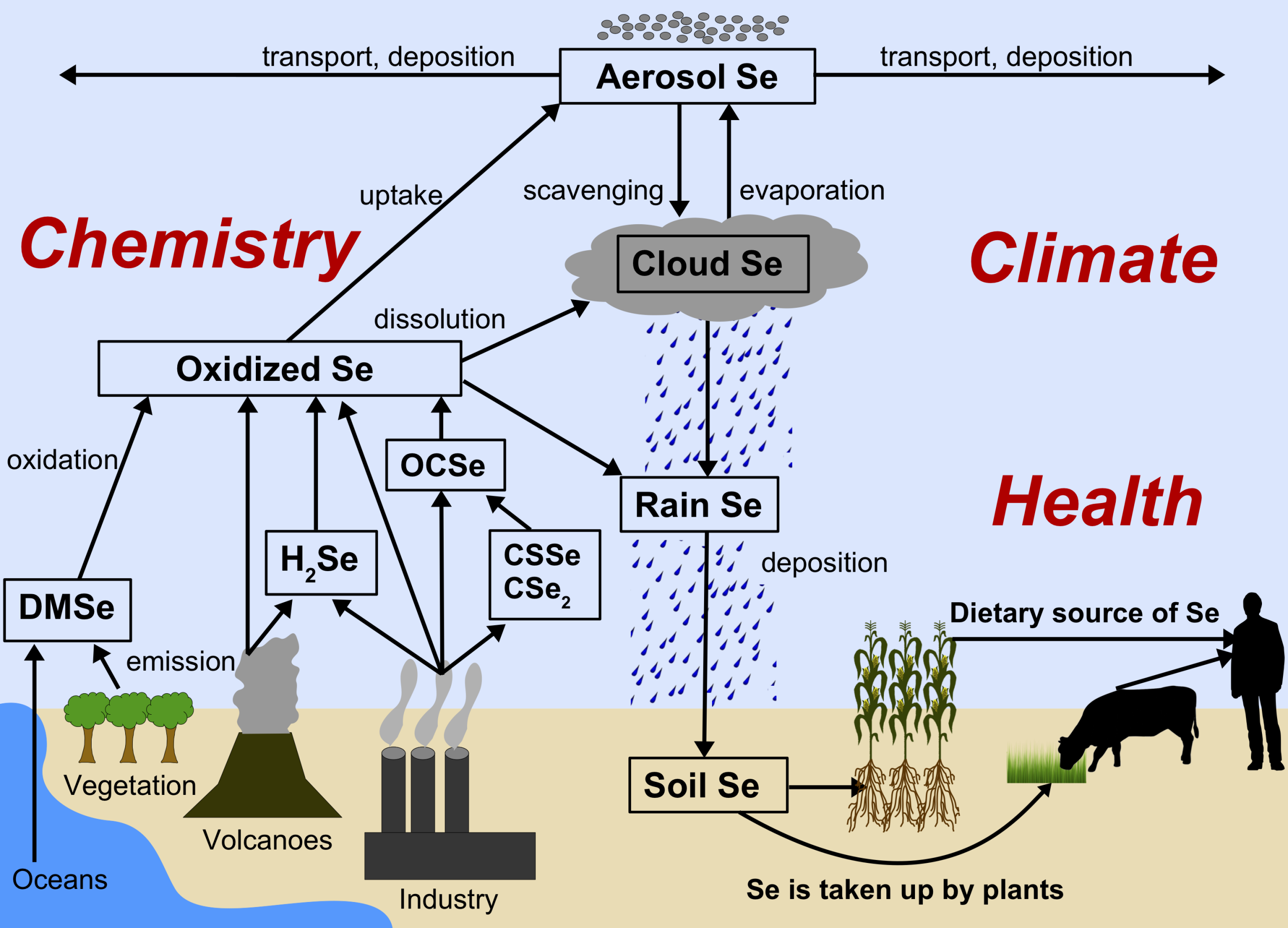Atmospheric selenium model
Involved group members: Aryeh Feinberg, Prof. Lenny Winkel
In collaboration with: Thomas Peter, Andrea Stenke (IAC)
An estimated 0.5 to 1 billion people globally have insufficient intakes of selenium, due to a lack of bioavailable selenium in agricultural soils. Atmospheric selenium deposition can be an important source of soil selenium in many regions. However, very little is known about the atmospheric cycling of selenium. Until now, it has been difficult to predict how far selenium would travel in the atmosphere and where it deposits at the Earth surface.
We tackle these unknowns by implementing selenium chemistry into a global aerosol-chemistry-climate model, SOCOL-AER. Aerosol and gas-phase species of selenium, including their chemical reactions, were added in the model to follow the atmospheric transformations of selenium. The atmospheric selenium cycle implemented in SOCOL-AER represents our current best understanding of how selenium behaves in the atmosphere, based on several past papers (e.g. Mosher and Duce, 1987; Wen and Carignan, 2007).
One of our main goals with the atmospheric selenium project is to map total selenium deposition fluxes. These predicted deposition fluxes will be valuable for soil models to simulate soil selenium concentrations, which in turn will help identify regions that might be at risk for selenium deficiency. Due to the uncertainties associated with many of the model’s input parameters, we will conduct extensive sensitivity and uncertainty analyses using surrogate modelling, in collaboration with the group of Professor Bruno Sudret (D-BAUG). Through sensitivity analysis we will be able to isolate which input parameters contribute the most to model uncertainty. These activities will establish research priorities in terms of which atmospheric selenium processes are most important to constrain.
Relevant Publications
Feinberg, A., Maliki, M., Stenke, A., Sudret, B., Peter, T., and Winkel, L. H. E.: Mapping the drivers of uncertainty in atmospheric selenium deposition with global sensitivity analysis, Atmospheric Chemistry and Physics, 20, 1363–1390, external page https://doi.org/10.5194/acp-20-1363-2020, 2020.
Feinberg, A., Stenke, A., Peter, T., and Winkel, L. H. E.: Constraining Atmospheric Selenium Emissions Using Observations, Global Modeling, and Bayesian Inference, Environmental Science and Technology, 54 (12), 7146-7155, external page https://doi.org/10.1021/acs.est.0c01408, 2020.
